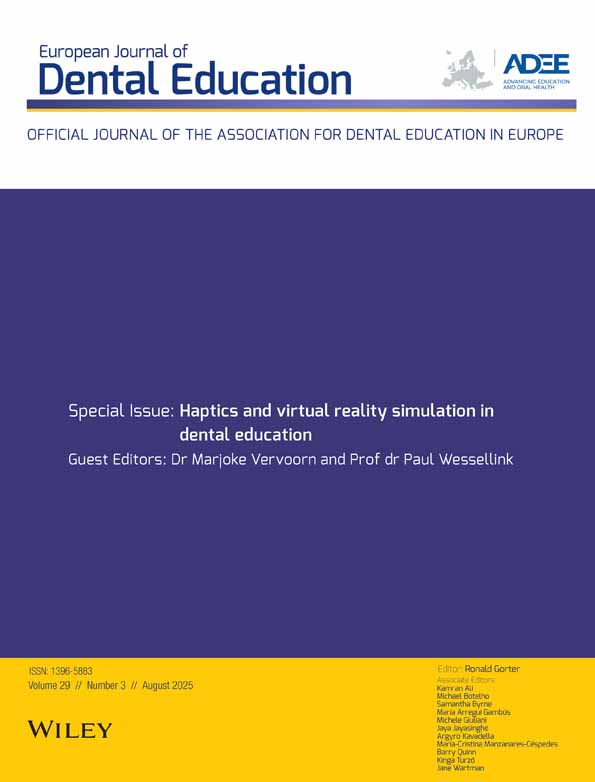4.1 Web-based interactive learning programmes
Abstract
In the future, the training of competent dentists will need to take advantage of up-to-date digital technologies and learning practices. In order to accomplish this, the following goals should be considered: i) the design of ‘customizable’ web-based curriculum matrices that accommodate the training philosophies and resources of individual dental schools; ii) the development of digital instructional modules that can be incorporated or downloaded into specific parts of a curriculum; iii) the establishment of an e-consortium, which provides peer view and guidance in the design of teaching modules, and which is responsible for the storage, maintenance, and distribution of teaching modules within the consortium; iv) the development of central human and physical resources at each dental school to enable the seamless delivery of instructional modules in a variety of learning environments; and v) the assessment and provision of ICT training to students and faculty with respect to the use of computers and related digital technologies and educational software programmes. These goals should lead to the creation of a ‘virtual dental school’. Within this project summative and formative evaluations should be performed during both the production and development of teaching material (e-learning material) and the learning process. During the learning process the following aspects should be measured and evaluated: i) students' behaviour; and ii) effectiveness, retention and the transfer of e-learned material into the clinical situation. To obtain evidence of the efficacy of e-learning material a certain amount of research has to be done in the near future. It is suggested that all parameters currently known have to be implemented during the development of a learning programme. Previous workers have evaluated the following elements with e-learning: i) planning, ii) programming and technical development, iii) learning behaviours, iv) learning outcomes of both the programme and the student, v) the acquisition of knowledge, skills and attitude and vi) the transfer of e-learned skills into clinical situations.




